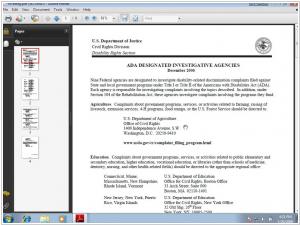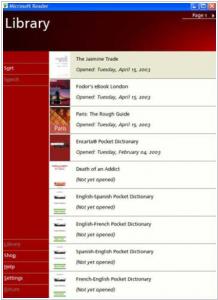Adobe Reader vs Microsoft Reader
Last updated: July 09, 2023
Adobe Reader and Microsoft Reader are both popular software applications used for reading and interacting with digital documents, but they have distinct differences in terms of their features, compatibility, and user experience. One key difference lies in their supported file formats and compatibility. Adobe Reader, now known as Adobe Acrobat Reader DC, is designed to view and interact with PDF files. It is widely compatible with various platforms and operating systems, including Windows, macOS, iOS, and Android. Adobe Reader offers a comprehensive range of features for reading, annotating, and printing PDF documents. On the other hand, Microsoft Reader, also known as Microsoft Edge, is primarily focused on reading EPUB and PDF files. It is integrated into the Microsoft Edge web browser and is compatible with Windows 10 devices. Microsoft Reader provides a simplified reading experience and offers basic functionalities for navigating and viewing EPUB and PDF documents.
Another notable difference between Adobe Reader and Microsoft Reader lies in their additional features and integration with other tools. Adobe Reader provides advanced features for interacting with PDF files, such as form filling, digital signatures, and commenting. It offers tools for highlighting, underlining, and adding notes to PDF documents. Adobe Reader also integrates with other Adobe software, allowing users to perform more advanced operations like creating PDF files, combining multiple documents, and more. Microsoft Reader, on the other hand, offers a more streamlined and lightweight experience. While it provides basic functionalities for reading and navigating EPUB and PDF files, it does not offer the same extensive set of features as Adobe Reader. However, Microsoft Reader benefits from its integration with the Microsoft Edge browser, which provides seamless access to reading and managing documents within the browser environment.
In terms of user experience, Adobe Reader and Microsoft Reader have different interfaces and design choices. Adobe Reader offers a comprehensive and feature-rich interface, with a wide range of tools and options accessible through its toolbar and menu system. It provides customization options for adjusting the layout, zoom levels, and viewing preferences. Adobe Reader's interface can be more complex due to its extensive features, but it offers a wealth of functionality for users who require advanced PDF interactions. Microsoft Reader, on the other hand, offers a simpler and more minimalistic interface. It focuses on providing a clean and distraction-free reading experience, with basic navigation options and limited customization. Microsoft Reader's interface is designed to be intuitive and user-friendly, catering to users who prefer a more streamlined reading experience.
Another notable difference between Adobe Reader and Microsoft Reader lies in their additional features and integration with other tools. Adobe Reader provides advanced features for interacting with PDF files, such as form filling, digital signatures, and commenting. It offers tools for highlighting, underlining, and adding notes to PDF documents. Adobe Reader also integrates with other Adobe software, allowing users to perform more advanced operations like creating PDF files, combining multiple documents, and more. Microsoft Reader, on the other hand, offers a more streamlined and lightweight experience. While it provides basic functionalities for reading and navigating EPUB and PDF files, it does not offer the same extensive set of features as Adobe Reader. However, Microsoft Reader benefits from its integration with the Microsoft Edge browser, which provides seamless access to reading and managing documents within the browser environment.
In terms of user experience, Adobe Reader and Microsoft Reader have different interfaces and design choices. Adobe Reader offers a comprehensive and feature-rich interface, with a wide range of tools and options accessible through its toolbar and menu system. It provides customization options for adjusting the layout, zoom levels, and viewing preferences. Adobe Reader's interface can be more complex due to its extensive features, but it offers a wealth of functionality for users who require advanced PDF interactions. Microsoft Reader, on the other hand, offers a simpler and more minimalistic interface. It focuses on providing a clean and distraction-free reading experience, with basic navigation options and limited customization. Microsoft Reader's interface is designed to be intuitive and user-friendly, catering to users who prefer a more streamlined reading experience.
21
Adobe Reader software is the free trusted standard for reliably viewing, printing, and annotating PDF documents. It’s the only PDF file viewer that can open and interact with all types of PDF content, including forms and multimedia.
10
Microsoft Reader is designed to make your onscreen reading experience as close as possible to reading a printed book. In addition, it adds active reading capabilities, instant access to content, and a personal library. Features include high-resolution ClearType and an add-on dictionary, as well as the ability to bookmark, highlight, annotate, make notes and drawings, and much more. Version 2.1.1 includes a security update that closes known gaps in the Microsoft Reader security architecture.


